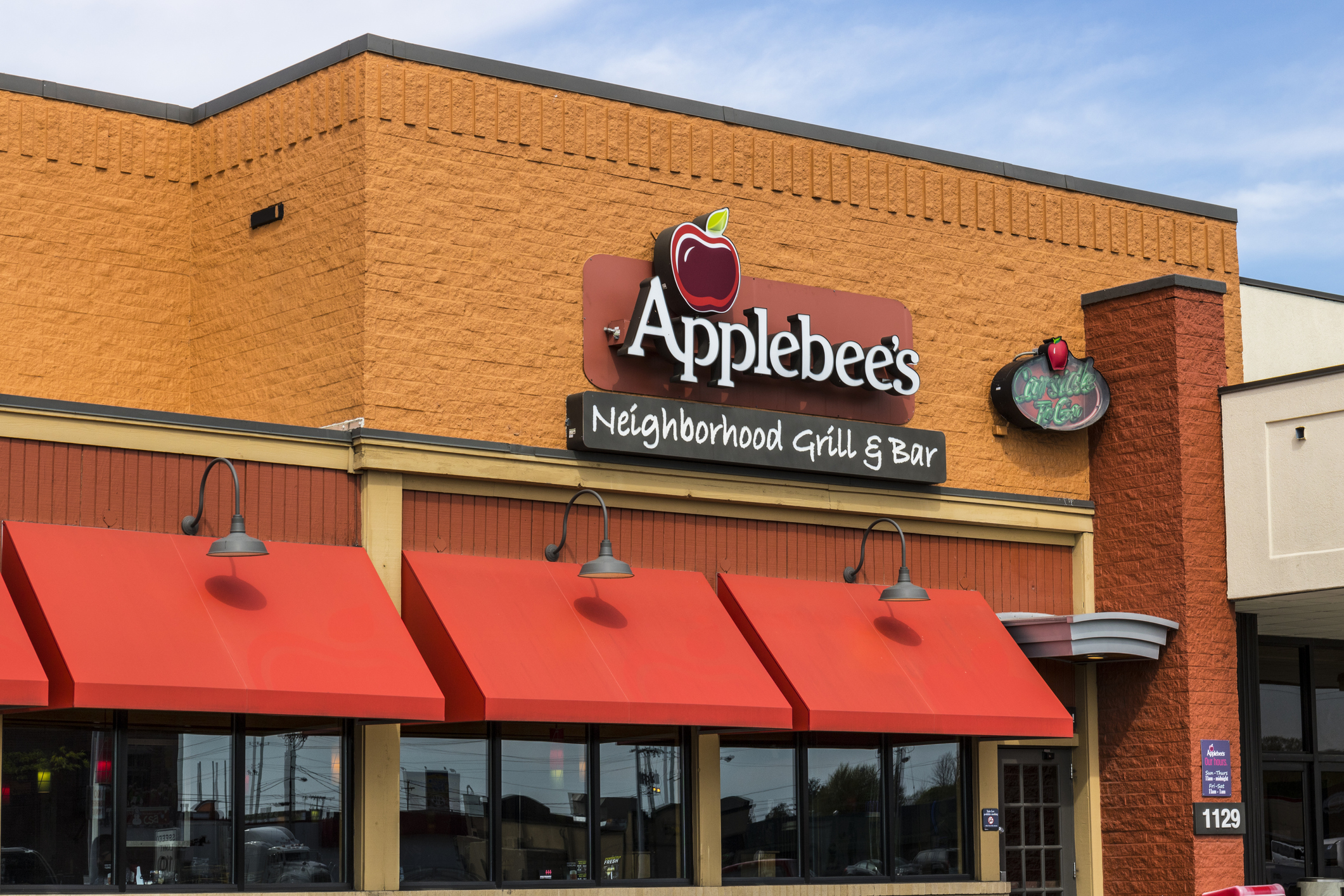
iStock.com/jetcityimage
Should More Retailers Fuse Like Applebee’s and IHOP Dual-Branded Locations?
In the realm of American chain restaurants, a fascinating proposition is underway. It involves two household names: Applebee’s and IHOP. These restaurant retailers, both under the umbrella of Dine Brands Inc., are contemplating dual-branded locations where Applebee’s and IHOP come together, not just in physical space but in operational harmony.
The notion emerged from an earnings call conducted by Dine Brands Inc. last week. CEO John Peyton disclosed plans to explore dual-branded venues with shared back-of-house facilities and a seamlessly integrated front-of-house experience.
This novel idea has already seen the light of day in international territories. Peyton revealed that they’ve piloted the model in eight “prototypes” across the globe. One such location is the latest Applebee’s-IHOP establishment in Leon, Mexico, which commenced operations in January 2024.
Peyton emphasized the significance of Mexico as one of their primary international markets. He expressed optimism about the growth potential presented by the dual-branded venue in Leon during the earnings call and affirmed the company’s commitment to evaluating the success of this experimental concept, discussing the potential expansion to selected sites within the United States.
Peyton delved further into the logistics of these hybrid restaurants. He detailed plans for “discrete entrances” that would enable patrons to seamlessly transition between Applebee’s and IHOP sections. Peyton envisioned a scenario where during breakfast hours, when IHOP tends to see more foot traffic, guests could be accommodated in the Applebee’s section, and vice versa during dinner hours.
The financial prospects of these dual-branded venues appear promising, as Peyton highlighted during the earnings call. He noted that they are yielding double the revenue compared to standalone Applebee’s and IHOP locations.
Peyton underscored the synergistic nature of the two brands, emphasizing their complementarity. This sentiment aligns with the broader trend in the industry, where conglomerates like Focus Brands have successfully combined multiple chains under one roof. For instance, Auntie Anne’s, Jamba, and others have found shared spaces to thrive collectively.
The roots of this potential fusion trace back to 2019 when IHOP Corp. acquired Applebee’s International Inc. for approximately $1.9 billion in cash. This transaction marked a significant consolidation in the sit-down restaurant sector. Dine Brands Inc. emerged as the entity overseeing Applebee’s, IHOP, and, subsequently, other brands like Fuzzy’s Taco Shop.
Despite revenue fluctuations reported by Dine Brands Inc., with a decline from $909.4 million to $831.1 million between 2022 and 2023, the company has continued its expansion efforts. While 72 new Applebee’s and IHOP franchisees were developed in 2023, 75 restaurants were closed, indicative of the dynamic nature of the industry.
Exploring Dual-Branded Hotels: Maximizing Profits Through Combined Appeal
Hotels are among some of the first to take advantage of dual-branding and have become a trend in the hospitality industry. A dual-branded hotel is a unique breed that accommodates two distinct hotels under one roof. Gone are the days of pigeonholing one brand per property. Instead, this innovative approach allows hoteliers to cater to diverse demographics simultaneously.
The roots of dual-branded hotels can be traced back to the early 2000s when boutique hotels gained traction. These establishments showcased the profitability of catering to niche audiences. Hoteliers, eager to replicate this success, began exploring ways to tap into multiple markets within a single property. The beauty of this setup lies in its cost-saving potential. By sharing resources and overheads, these hotels streamline operations and bolster efficiency.
Pros of Duel-Branded Hotels:
- Cost Efficiency: Sharing facilities reduces construction costs, offering two for the price of one.
- Broadened Appeal: Two brands under one roof attract a wider spectrum of clientele.
- Strategic Land Use: Dual-branded hotels optimize land utilization, especially in prime locations with high real estate prices.
- Simplified Staffing: Shared personnel streamlines operations, managing fluctuating demand without increasing payroll.
Cons of Dual-Branded Hotels:
- Development Challenges: Retrofitting existing structures or making aesthetic changes can lead to significant expenses.
- Marketing Complexity: Crafting separate campaigns for distinct audiences strains resources and budgets.
- Design Dilemmas: Balancing brand individuality with cohesion poses architectural and operational challenges.
- Location Sensitivity: Success depends on selecting locales conducive to both brands’ prosperity, a task with inherent risk.
The potential integration of Applebee’s and IHOP into dual-branded locations presents a compelling narrative within the landscape of American dining. As Dine Brands Inc. navigates this territory, the future of these iconic chains hangs in the balance, poised for evolution in response to shifting consumer preferences and market dynamics.
Discussion Questions
How might the success of dual-branded restaurants, exemplified by the Applebee’s-IHOP fusion, reshape traditional notions of brand identity and customer loyalty within the retail industry?
What implications does this trend have for other conglomerates seeking to optimize their portfolio of brands?
In considering the financial and operational benefits of dual-branded establishments, such as shared resources and expanded customer reach, what criteria should executives use to evaluate the feasibility and potential pitfalls of merging disparate brands under one roof?
